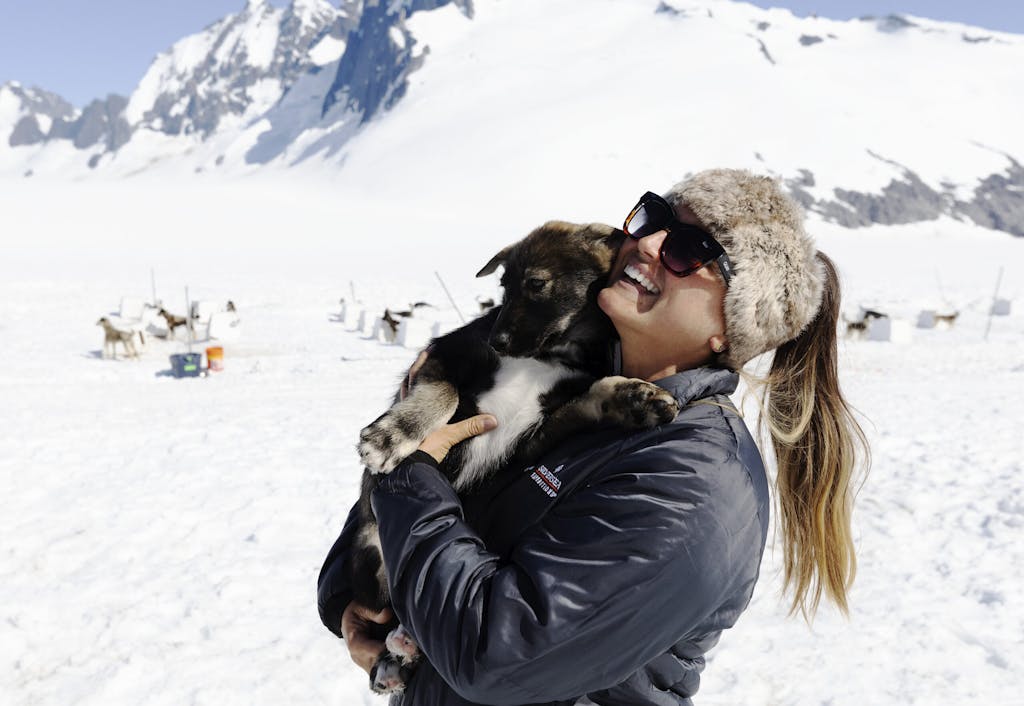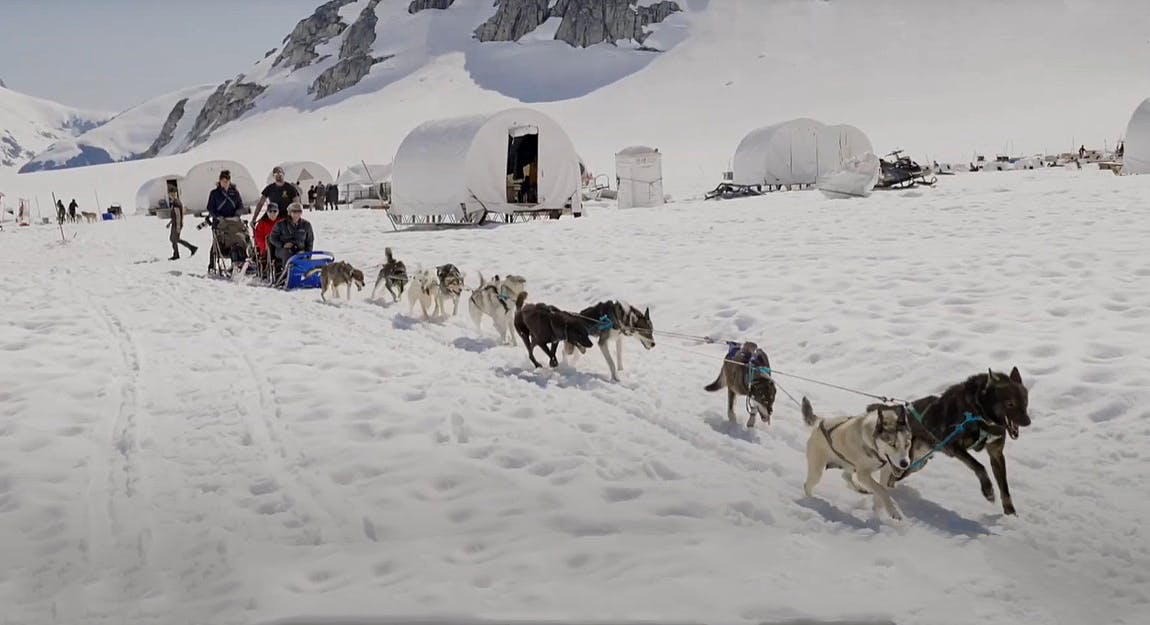On, Huskies! When Minds Turn to Mush, Alaska’s Mendenhall Glacier Is the Place
Careening along at breakneck speed behind a joyous team of sled dogs, the surface of a glacier seems as concrete as solid ground. But it’s not. It’s “plastic.”
We’ll explain that in a minute. But first, we turn to the dogs, which are the stars of this show, as videographer Ross Vernon McDonald shows in this sampling of the age-old method of transportation at Juneau’s Mendenhall Glacier.
The Siberian husky may come to mind when you think of mushing, but sled dogs come in different breeds, varying in size and shape. Two characteristics they share: They are powerful animals, and they are extravagantly people-friendly — and even more extravagantly pleased to get up and go. It’s their job, and they get to practice this amazing animal profession in superlative surroundings for visitors awed by the experience.

The glacier experience
Despite the global fame of the wintertime Iditarod race, which covers about 1,000 miles, most sled dogs are much more accustomed to sprinting a few miles, and the upper reaches of the Mendenhall Glacier provide an ideal venue.
Cruise visitors, airlifted here by helicopters or small planes from Juneau airport, can hike the glacier using crampons for traction; taste the glacial water that derives from snow that fell hundreds of years ago; and listen to myriad melodies of the glacier’s ice and water as they flow, crack, pop, creak, splash and burble.
Surprisingly, the surface of a glacier can feel quite toasty when Alaska’s high summer sun reflects off all that ice, even shirt-sleeve warm on mild days.
As you observe this wonder, it may be hard to think of it as “plastic.” But that’s the term geophysicists apply to glacial ice, which one such scientist likens to stiff toothpaste squeezed out by gravity. The technical term for glacial ice is “non-linear viscous material,” and glaciologists happily note that, in the arcane world of ice-particle physics, glacier movement is caused partly by “plastic flow.”
“Think of it as being like honey,” Shad O’Neel, a federal geophysicist formerly with the U.S. Geological Survey in Anchorage, says of the internal substance of these massive, miles-long rivers of ice that descend by the thousands from the towering peaks and plateaus that ring coastal Alaska from the Aleutians to Ketchikan — 27,000 glaciers, according to a USGS estimate.
Miles of centuries-old ice
Juneau’s Mendenhall — which may be the most-visited glacier on Earth — represents snow that fell in the mountain heights east of here hundreds of years ago, compacted into ice and flowed down under the weight of the ice and the pull of gravity. The 13-mile-long Mendenhall descends the Alaska Coast Range from the 1,500-square-mile Juneau Icefield, a 90-mile expanse of snow, ice and rock, thousands of feet thick, fed by annual snowfalls surpassing 100 feet.
Like most Alaska glaciers, the glacier is retreating. It has moved about a mile in the past 25 years, but it will still be here for a while. No other place on Earth is like the surface of a glacier, and racing along behind boisterous, happy dogs magnifies the experience.
Add up the sensory elements — canine enthusiasm, warm sunshine, the scent of snow, ice and mountain rock, a glacial color spectrum from ivory to cerulean, the symphony of sound — and the Mendenhall offers one of the most viscerally memorable travel experiences possible.
Want to make memories with sled dogs on Mendenhall Glacier? Visit Juneau on one of Silversea’s Alaska cruises.
